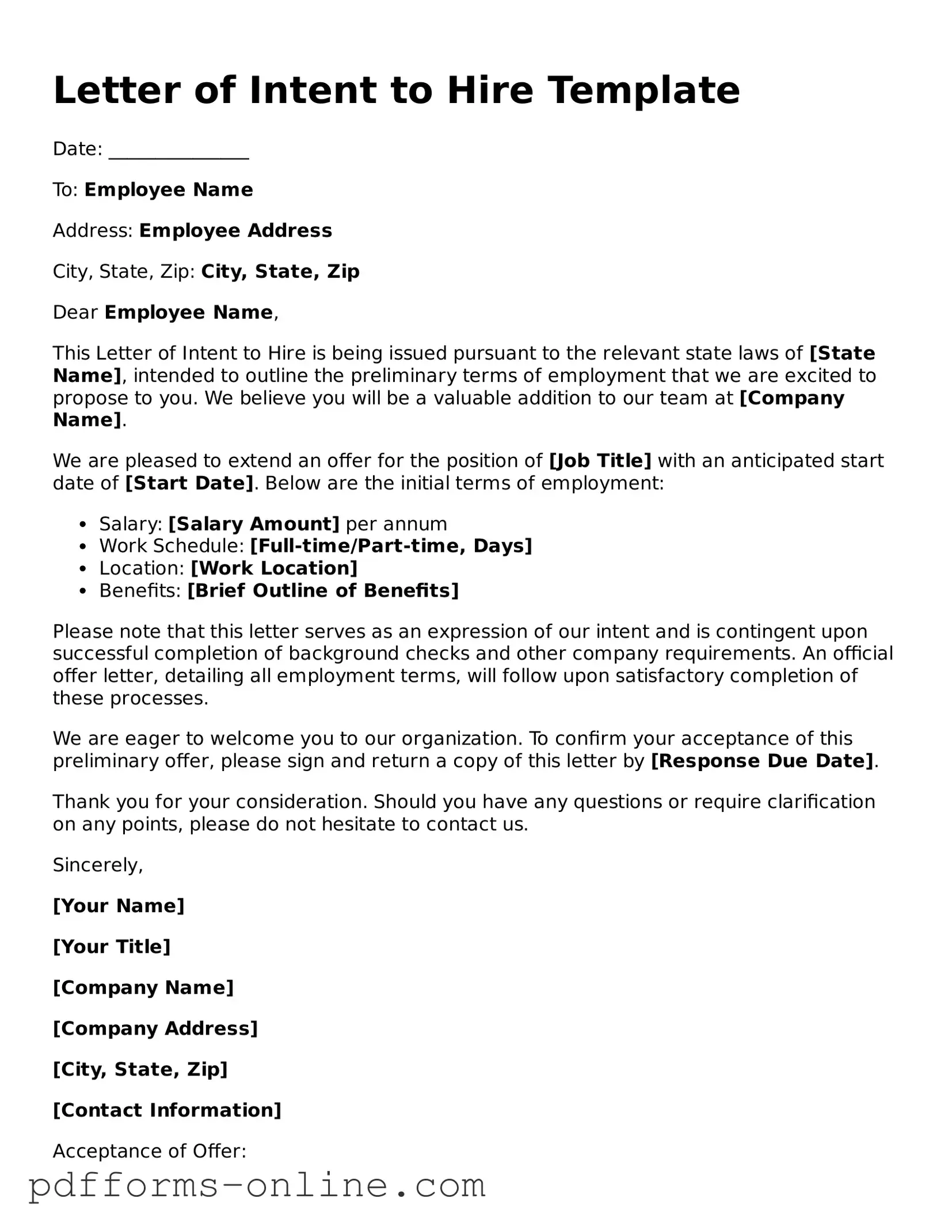Letter of Intent to Hire Template
Date: _______________
To: Employee Name
Address: Employee Address
City, State, Zip: City, State, Zip
Dear Employee Name,
This Letter of Intent to Hire is being issued pursuant to the relevant state laws of [State Name], intended to outline the preliminary terms of employment that we are excited to propose to you. We believe you will be a valuable addition to our team at [Company Name].
We are pleased to extend an offer for the position of [Job Title] with an anticipated start date of [Start Date]. Below are the initial terms of employment:
- Salary: [Salary Amount] per annum
- Work Schedule: [Full-time/Part-time, Days]
- Location: [Work Location]
- Benefits: [Brief Outline of Benefits]
Please note that this letter serves as an expression of our intent and is contingent upon successful completion of background checks and other company requirements. An official offer letter, detailing all employment terms, will follow upon satisfactory completion of these processes.
We are eager to welcome you to our organization. To confirm your acceptance of this preliminary offer, please sign and return a copy of this letter by [Response Due Date].
Thank you for your consideration. Should you have any questions or require clarification on any points, please do not hesitate to contact us.
Sincerely,
[Your Name]
[Your Title]
[Company Name]
[Company Address]
[City, State, Zip]
[Contact Information]
Acceptance of Offer:
By signing below, I accept the terms outlined in this Letter of Intent to Hire:
_______________________________
Signature: ___________________
Date: ______________________
